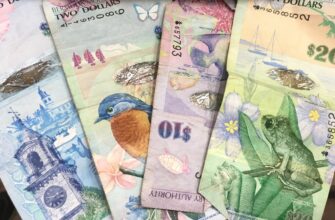Understanding the USD to Rupiah Exchange Rate
The USD/IDR exchange rate represents how many Indonesian Rupiah (IDR) one US Dollar (USD) can buy. This critical financial metric impacts everything from vacation budgets to multinational corporate profits. As of 2023, the exchange rate hovers around 15,000-16,000 IDR per USD, but daily fluctuations occur due to global economic forces. Monitoring this rate helps travelers, investors, and businesses make informed decisions when converting currencies.
Key Factors Influencing USD/IDR Fluctuations
Several dynamic elements drive changes in the USD/Rupiah exchange rate:
- Interest Rate Policies: When the US Federal Reserve raises rates, USD often strengthens against IDR as investors seek higher returns.
- Commodity Prices: Indonesia’s exports (palm oil, coal, nickel) affect IDR value. Falling prices weaken the Rupiah.
- Political Stability: Elections or policy shifts in Indonesia can trigger investor confidence changes.
- US Dollar Strength: Global demand for USD as a “safe-haven” currency during crises.
- Inflation Differentials: Higher inflation in Indonesia versus the US typically depreciates IDR.
Historical USD/IDR Exchange Rate Trends
Over the past decade, the Rupiah has experienced significant volatility against the Dollar:
- 2013-2015: IDR fell from 10,000 to 14,000 per USD during the “Taper Tantrum”
- 2018-2019: Reached 15,000+ IDR/USD amid US-China trade wars
- 2020: Pandemic-driven surge to 16,500 IDR/USD
- 2022-2023: Stabilized near 15,200 with Bank Indonesia interventions
Long-term depreciation reflects Indonesia’s higher inflation and current account deficits. Historical data shows IDR loses 3-5% annually against USD on average.
How to Get the Best USD to Rupiah Exchange Rate
Maximize your currency conversion with these proven strategies:
- Track Live Rates: Use apps like XE or OANDA for real-time alerts when rates peak.
- Avoid Airport Kiosks: They offer rates 10-15% worse than banks or licensed money changers.
- Consider Limit Orders: Some platforms let you set target rates for automatic conversion.
- Use Mid-Market Rates Reject “zero commission” traps – focus on the actual exchange rate offered.
- Leverage Transfer Services: Wise (TransferWise) or Revolut often beat traditional bank rates for larger amounts.
Impact on Travelers, Businesses, and Investors
For Travelers: A stronger USD means more spending power in Bali. At 16,000 IDR/USD versus 14,000, a $100 dinner drops from 1.4 million IDR to 1.6 million IDR – effectively a 14% discount.
For Importers/Exporters: Indonesian textile exporters benefit from weaker IDR (more Rupiah per Dollar), while electronics importers face higher costs when IDR depreciates.
For Investors: USD-denominated Indonesian government bonds yield higher returns when IDR weakens, but currency risk can erase gains.
Frequently Asked Questions (FAQ)
Q: Where can I check live USD to IDR rates?
A: Reliable sources include Bank Indonesia’s website, Bloomberg, Reuters, or currency apps like XE Currency. Rates update every 15-30 seconds.
Q: Will the Rupiah strengthen against USD soon?
A: Most analysts predict gradual IDR weakening (16,000-17,000/USD by 2025) due to interest rate differentials and commodity price uncertainties. However, unexpected Fed rate cuts could shift this trend.
Q: Is it better to exchange USD for IDR in the US or Indonesia?
A> Indonesia typically offers better rates, especially at authorized money changers in major cities like Jakarta or Bali. Avoid exchanging at hotels or airports.
Q: How do USD/IDR rates affect Indonesian stocks?
A> A weaker Rupiah boosts export-oriented companies (mining, agriculture) but hurts stocks reliant on imports (automotive, tech). The Jakarta Composite Index often moves inversely to USD strength.
Q: What’s the lowest recorded USD/IDR rate?
A> The Rupiah’s all-time low was 16,950 IDR per USD in April 2020 during peak COVID-19 market panic. Bank Indonesia intervened with $3 billion in forex reserves to stabilize it.








